Operation Baytown. Allied landing operation in Italy
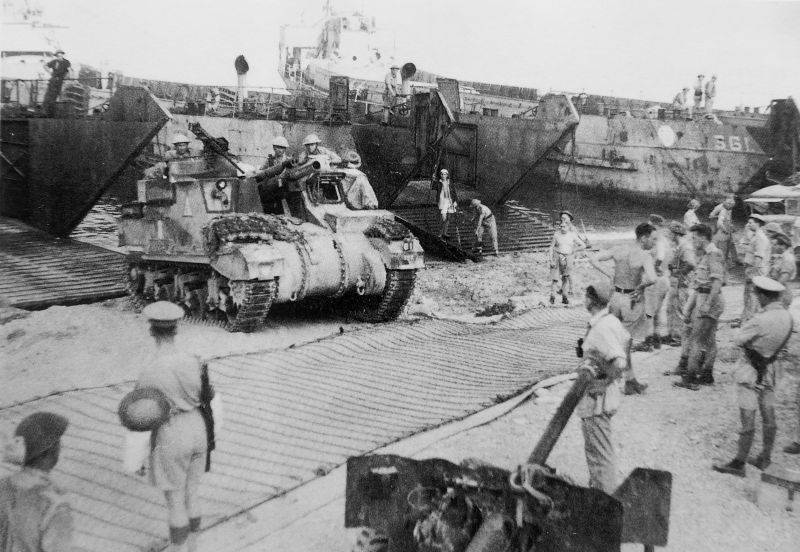
The landing of a British army unit on the Italian coast in the region of Reggio Calabria. September 3, 1943
German defense
Hitler knew from intercepted radiograms already in mid-August 1943 that Badoglio was negotiating with England and the USA (Operation Axis). The Fuhrer wanted to keep as much of Italy under control as possible. Therefore, Rommel's proposal to withdraw troops to the Apennines, leaving as few troops as possible in the south, was rejected. In general, Hitler agreed with the opinion of the commander of the German forces in southern Italy, Field Marshal Kesselring: give a decisive battle south of Rome, and do not send large forces to the south until the situation is clarified.
The number of enemy landing forces and the landing site were not known. It was obvious that the enemy could cross the Strait of Messina and land troops in Calabria. The western coast of Southern Italy was characterized by steep, inaccessible places. Only Salerno Bay was convenient for landing. Troops could also land in the areas of Naples and Rome. On the east coast there were convenient places and ports of Taranto, Brindisi and Bari. But the distance to these places and the possibility of support with aviation were noticeably worse.
Thanks to the German group in Sicily, which gained time and did not allow itself to be destroyed, the German forces in Italy had time to prepare for defense. The divisions that retreated from Sicily to Southern Italy and the formations transferred there from the north were united into the 1943th Army created in August 10 under the command of Colonel General von Vietinghoff. Formally, the Germans were subordinate to the commander of the 7th Italian Army, General Asiero, who was responsible for the defense of Southern Italy.
The Italian army consisted mainly of a few coastal defense divisions with minimal combat capability. The 10th Army was supposed to gain time to organize defense in Central Italy, while withdrawing to the area south of Rome in a timely manner and without serious losses. Taking into account 3 new and 4 divisions withdrawn from Sicily, which were able to evacuate most of the equipment and supplies, the position of German troops on the continent was relatively favorable.
14-th tank The corps of the 10th Army (16th Panzer Division, Hermann Goering Panzer Division and 15th Motorized Division) was transferred to the area of Salerno, Gaeta, Naples. The 14th Tank Corps and the 1st Parachute Division were replenished and were given the opportunity to rest after heavy fighting in Tunisia and Sicily. The newly arrived 16th Panzer Division was also in the Salerno area.
In the south of the peninsula, in Calabria and Apulia, the 76th Tank Corps (29th Motorized, 1st Parachute and part of the forces of the 26th Tank Division) operated. The newly arrived 26th Panzer Division took up defensive positions at the narrowest point of the peninsula, in the Catanzaro area. The main forces of the 1st Parachute Division were deployed in the ports of Taranto, Brindisi and Bari.
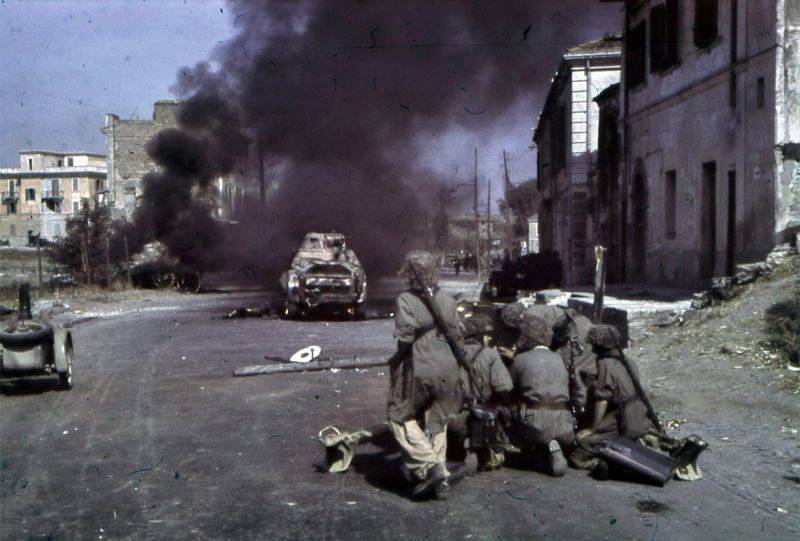
An artillery crew from the 6th Parachute Regiment of the Luftwaffe in battle with Italian troops who were trying to prevent German troops from entering Rome after Italy's withdrawal from the war. On the evening of September 9, 1943, German units based south of Rome began moving towards the Italian capital with the goal of occupying the city. Clashes with Italian troops occurred in the Montagnola area of Rome, on Via Laurentina on the morning of September 10. In the frame are damaged, burning AB41 armored vehicles from the 1st Grenadier Regiment. As a result, the Italians were defeated and disarmed. In total, 42 Italian military personnel were killed that day and 11 civilians died.
Allied landings in Italy
The Anglo-American military-political leadership hesitated for a long time when determining its future plans. However, the success of the Russians at Kursk prompted them to return to the issue of landing troops in Europe. A conference of the leadership of the United States and Great Britain was urgently convened. It took place on August 14–24, 1943 in Quebec under the code name “Quadrant”.
Churchill had previously insisted on landing allied armies on the Balkan Peninsula in order to prevent the Russians from appearing in Southern Europe and the local countries falling under the influence of the USSR. However, the Americans have already begun to fear that the Russians, developing an offensive, could make significant progress in the central strategic direction. And if the Allies get bogged down in Southern Europe, the Red Army will occupy Central Europe. The Quebec Conference decided to carry out the landings in Northern France in May 1944.
In the near future, the Allies planned to withdraw Italy from the war and create air force bases in the Rome area and, possibly, further north. Occupy Sardinia and Corsica. Create an Italian Front in Northern Italy to divert German forces from France. This created favorable conditions for an invasion of Northern France and possibly Southern France.
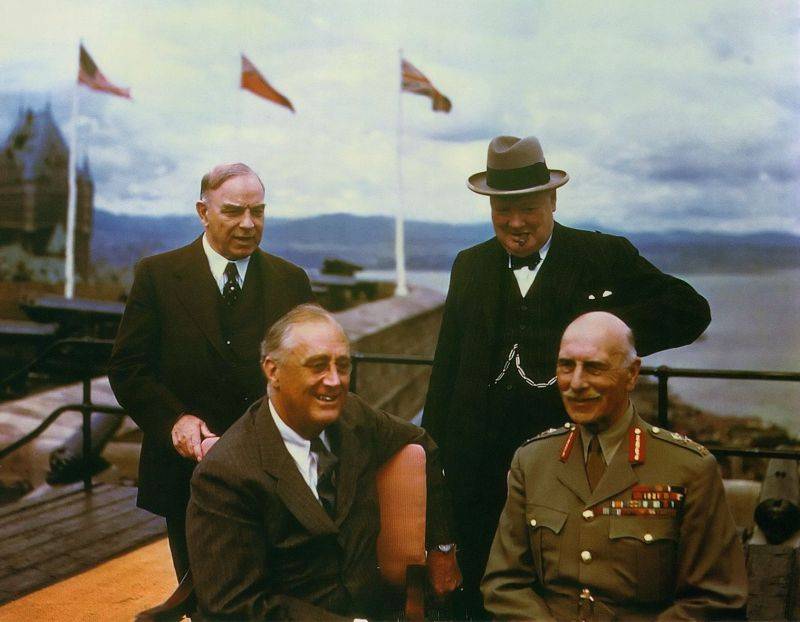
Allied leaders on the terrace of the Citadel in Quebec during the Quebec Conference of 1943, which discussed the strategy for opening a Second Front in Europe and other Allied actions against Germany (such as increased bombing). From left to right: Canadian Prime Minister William Mackenzie King, US President Franklin Delano Roosevelt, Winston Churchill, Governor General of Canada Earl of Athlone (Alexander Cambridge Athlone)
At the first stage, the Allies decided to land troops of the 5th American Army, reinforced by the British 10th Corps (2 divisions) on the coast of the Gulf of Salerno south of Naples on the west coast of Italy and the formation of the 8th British Army in the Reggio Calabria region in the south peninsula with the goal of gradually moving north.
The British landing was intended to divert the enemy from the main landing area at Salerno. Large forces and assets were involved in the landing operation. In August 1943, the Allies had 40 divisions in the Mediterranean theater, including 27 British, 9 American and 4 French. They could be supported by more than 3,1 thousand aircraft.
Eisenhower demanded a quick offensive and wanted to launch the offensive of the British 23th Army on August 8rd. The commander of the 8th Army, Montgomery, was against a hasty operation.
The landing of allied troops was delayed due to a number of objective problems.
Roads in northeastern Sicily were destroyed by the retreating Germans. This delayed the concentration of forces and resources of the British army. There was a shortage of landing craft. The ability to identify landing points was limited. It was necessary to take into account the potential of fighter aircraft to cover the landing.

On the night of September 3, 1943, Operation Baytown began. Allied aircraft and artillery launched powerful attacks on the Reggio Calabria area. At dawn, units of the 1st Canadian and 5th British divisions of the 8th Army crossed the Strait of Messina and, encountering no resistance, landed on the shore. There was not a single German plane during the landing. Allied forces quickly occupied Reggio Calabria and began advancing along narrow mountainous roads to the north.
Resistance was minimal: the Italians simply surrendered. The Germans basically only destroyed communications and mined them. The German 29th Motorized Division was ordered to withdraw from the coast and conduct only deterrent operations in Calabria. Gradually withdrawing, units of the 29th Division linked up with the 26th Panzer Division south of Catanzaro.
Despite minimal enemy resistance, the Allies advanced extremely carefully and slowly. The German rearguards quietly retreated to the north, having contact only with British reconnaissance units. By the end of September 8, the allied army had marched only 20–25 km.
On September 8, an English landing force - a reinforced regiment - was landed in the rear of German troops in the Banyara area. The Germans counterattacked with the forces of the 16th Panzer Division and narrowed the enemy bridgehead, gaining the opportunity to continue their systematic retreat. On September 10, the British reached the Catanzaro-Nicastro line.
Here the British stopped, although there was practically no enemy in front of them. The main problem was supply: the roads were bad, destroyed, and there were not enough transportation facilities.
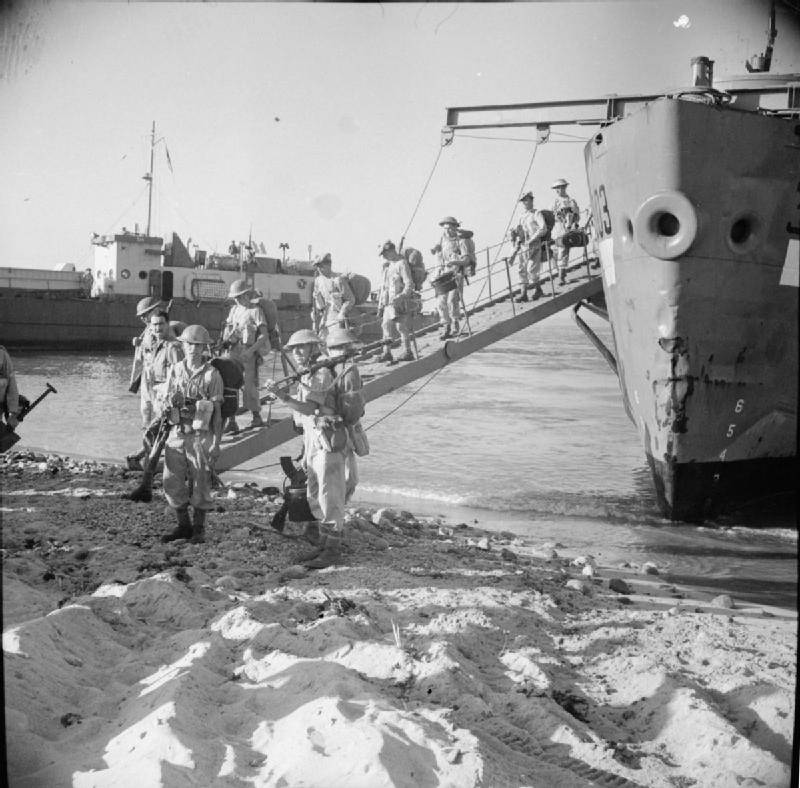 British landing in Reggio. September 3, 1943
British landing in Reggio. September 3, 1943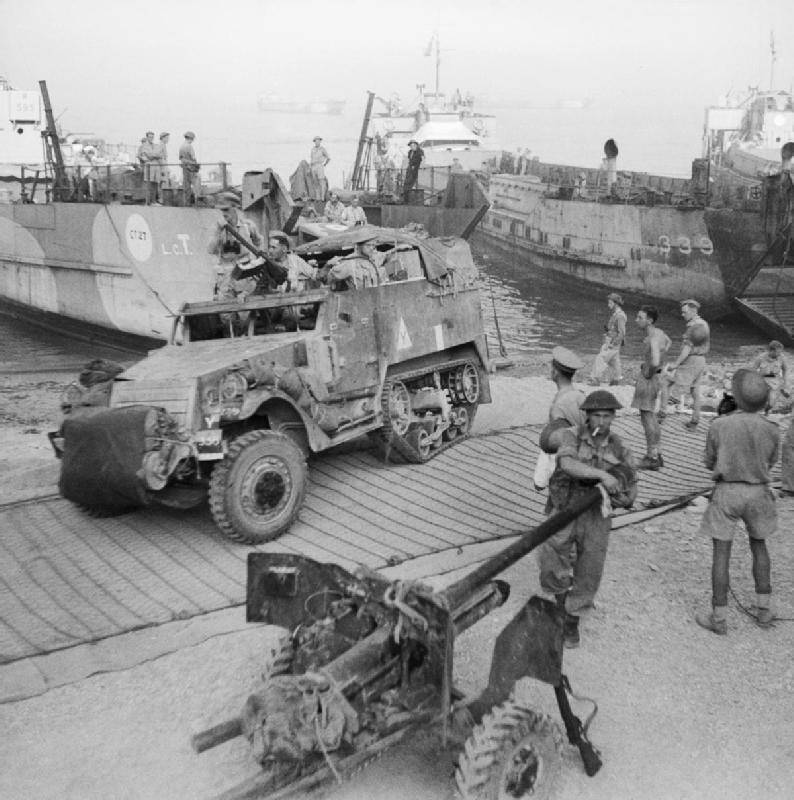
Allied landings in Reggio
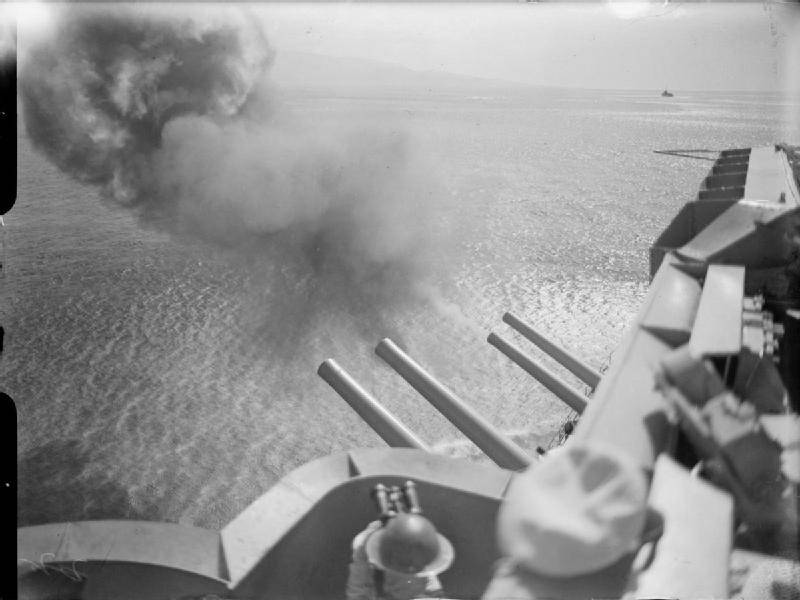
Royal Navy supports landings in Italy
Disarmament of the Italian army
At the negotiations between the Anglo-Americans and Italians on the terms of Italy's surrender, the question of joint action against the Germans was raised. In particular, the issue of landing the American 82nd Airborne Division on airfields near Rome—Operation Grant II—was being worked out. The airfields were first to be occupied and guarded by Italian troops.
But on the night of September 8, Badoglio reported that Italian troops would not be able to complete this task. He also pointed out that it was inappropriate to announce the surrender of Rome before the successful operation in Salerno, since this would provoke the Germans to capture Rome and overthrow the government.
In addition, the American military noted that having landed near Rome, the landing party would have fallen into a trap. Therefore, the operation must be canceled. The command canceled this operation.
Badoglio's hopes that the Allies would not rush to announce Italy's surrender were not realized. On the evening of September 8, London radio announced an armistice with Italy. The head of the Italian government also had to make a radio statement about a truce and give an order to stop hostilities.
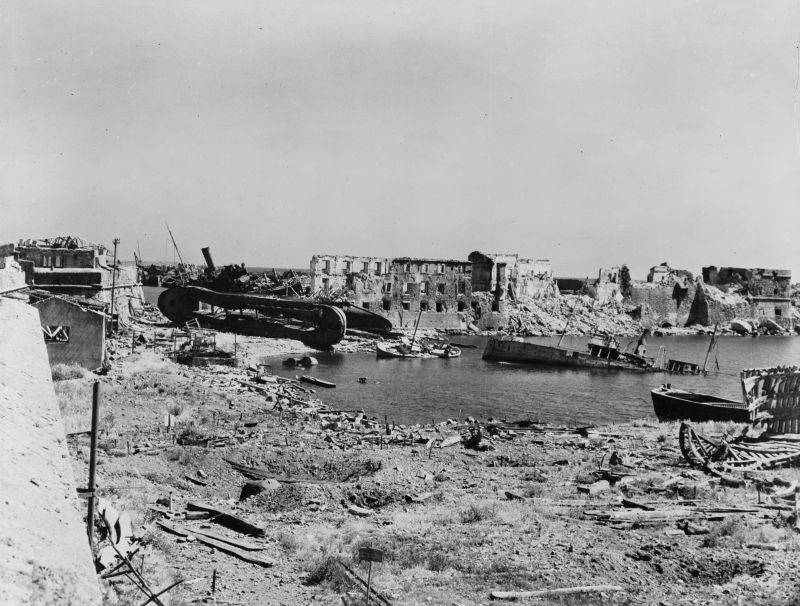
Ruins of the harbor of the Italian port of Civitavecchia. The city was one of the main targets of Allied air power to prevent the transport of reserves and equipment by sea to Rome.
The German army immediately launched Operation Axis. The German divisions, which already controlled strategic areas of the country, quickly and decisively disarmed the Italian troops. The Italian high command, a few weeks before the armistice, gave instructions to commanders and troops in case of withdrawal from the war and possible German aggression.
However, the instructions were devoid of specificity, were ineffective and only increased the demoralization of the troops, who were stunned by the fundamental changes in the country's politics. The army literally collapsed. Most of the commanders, faced with decisive actions by the Wehrmacht, preferred to throw out the white flag. Units that found themselves without commanders and clear instructions simply fled.
The top military-political leadership of Italy was unable to organize effective resistance from the armed forces. Perhaps they did not intend to, hoping for an Allied landing. In turn, the Anglo-Americans did not help the Italians, who nevertheless resisted. They saw them only as “cannon fodder” that could be written off.
Rommel and Army Group B occupied the northern regions of Italy without any problems. The field marshal, in a letter to his wife dated September 10, 1943, reported:
Kesselring, who commanded Army Group South, despite some fears that he would not be able to simultaneously parry the enemy's attack and neutralize the Italian army, also coped with his task quite well.
On the evening of September 9, the Italian king and government fled to the south of the country, to Brindisi, then to Egypt. The capital was defended by 4 Italian divisions, a total of about 55 thousand soldiers, 200 armored vehicles. They were opposed by Berentin's 2nd Parachute Division and Greiser's 3rd Panzer Division, a battalion of the 26th Panzer Division. The Germans occupied Rome without any problems on September 10–11.
The Italian fleet, which consisted of more than 200 ships, including several of the largest and most modern battleships, was of particular strategic value to the Third Reich. Most of the ships were located at bases on the west coast of the country - in La Spezia, Genoa and Taranto. The Italians decided to take the ships to Malta and North Africa.
On the night of September 9, three battleships - Roma, Vittorio Veneto and Italia - left La Spezia, accompanied by 3 cruisers and 8 destroyers. The ships left under the command of Admiral Carlo Bergamini, who received orders to surrender the ships to the Anglo-Americans in Malta. The Germans occupied the city, arrested and shot the captains of several Italian ships, who were not able to withdraw their ships and therefore sank them.
3 more cruisers joined from Genoa. On the same day, Italian ships were attacked by German bombers off the coast of Sardinia. Several ships were seriously damaged, and the battleship Roma was lost. Of the 1 crew members, only 849 were rescued. Most of the remaining ships reached North Africa and Allied-controlled Malta safely.
The 4th Italian Army, based in the south of France and in the process of being transferred to Italy, was unable to resist. Actually, the Italians, as in other places, did not want to fight either against the Anglo-Americans or against the Germans. Most of the soldiers simply dispersed, trying to get home. The Germans occupied key positions in southern France without any problems. On September 12, the command officially disbanded the army. The large Italian group in the Balkans (2nd, 9th and 11th armies) generally surrendered without a fight.
In places where the Italians tried to resist, the Germans showed great cruelty and drowned the resistance in blood. Hitler issued an order allowing any Italian officer who resisted to be executed “for treason.” On September 18, the Wehrmacht High Command issued an order that “due to the insidious and treacherous behavior of the Italians, no prisoners should be taken in Cephalonia.” The Germans killed prisoners of war of the Italian 33rd Infantry Division "Acqui" on the Greek island of Kefalonia - about 5 thousand people. It was one of the largest mass executions of prisoners of war during the war and one of the largest war crimes of the Wehrmacht.
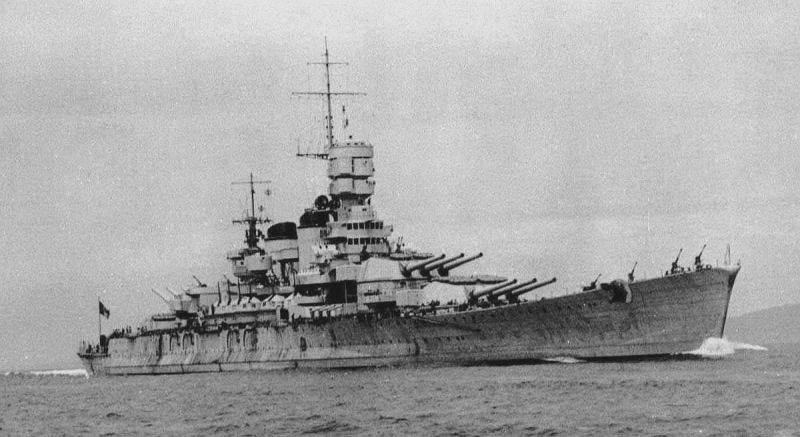
Italian battleship Roma at sea
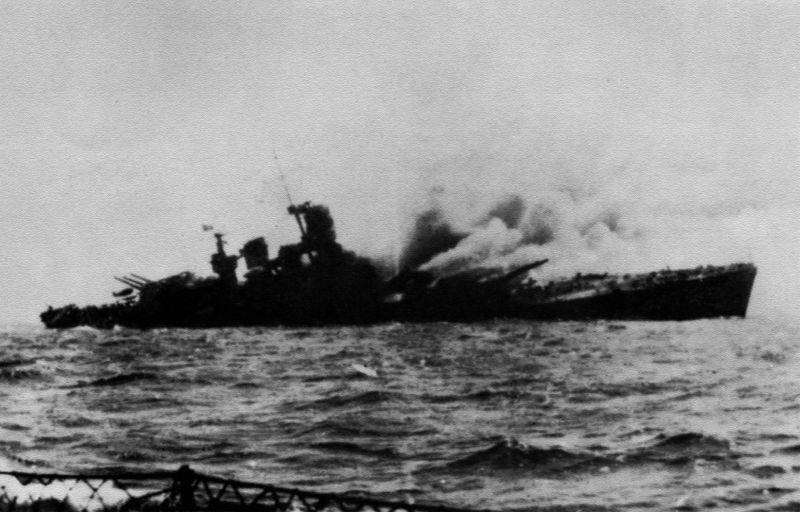
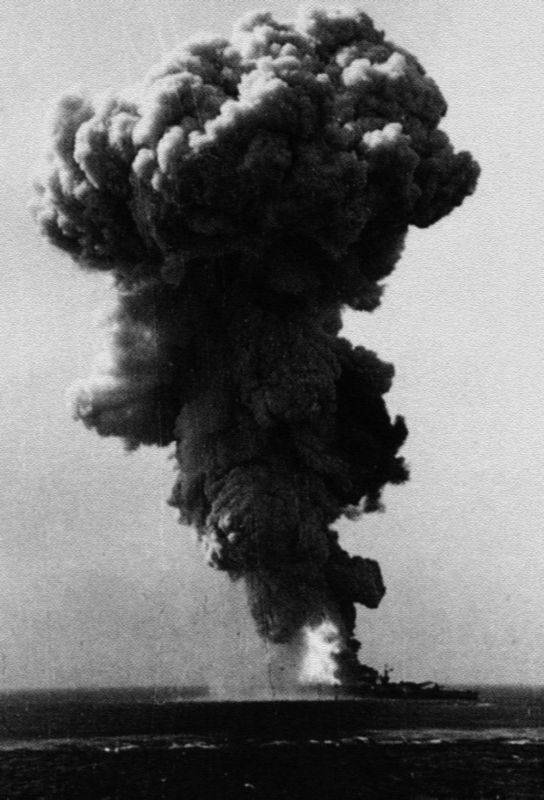
The sinking of the Italian battleship Roma. On September 9, 1943, at three o'clock in the morning, the main part of the Italian fleet, including the battleship Roma, left La Spezia and headed to Malta for internment. The movement of ships was controlled by Allied reconnaissance aircraft. At 15:33 217 min. On the same day, the Italian squadron near the island of Sardinia was attacked by eleven German Do.1400 bombers based at an airfield in Southern France. The planes were attacked with new FX-XNUMX guided bombs.
Roma was hit by two bombs within 10 minutes of each other. As a result of the second hit, the main caliber ammunition magazines No. 2 and 1 (700 tons of ammunition) detonated. A strong fire began, and a plume of black smoke several hundred meters high rose above the bow of the battleship. At 16:18 the ship broke and sank. Of the 1 crew members, only 849 were rescued.
Success of the Third Reich
Germany carried out Operation Axis quickly and effectively. Most of Italy with Rome, large industrial centers in the north of the country, strategic positions remained under the control of the Germans. The Germans occupied the Italian occupation zone in France and the Balkans (Greece, Albania and Yugoslavia). The Italian army was disarmed and could not help the allies in any way.
The Italians lost 20–30 thousand killed and 800 thousand captured. Almost all weapon, equipment and supplies of the Italian army were captured by the Germans. The only setback was the withdrawal of large ships of the Italian fleet under enemy control.
On September 12, the Germans carried out a successful special operation "Oak". German saboteur Otto Skorzeny freed the deposed leader of Fascist Italy, Benito Mussolini, who was being held at the Albergo Rifugio Hotel in the Apennine Mountains. Mussolini wanted to retire, but Hitler forced him to head the new regime. On September 23, the Italian Social Republic was created, informally known as the Republic of Salo (due to its capital in the city of Salo).
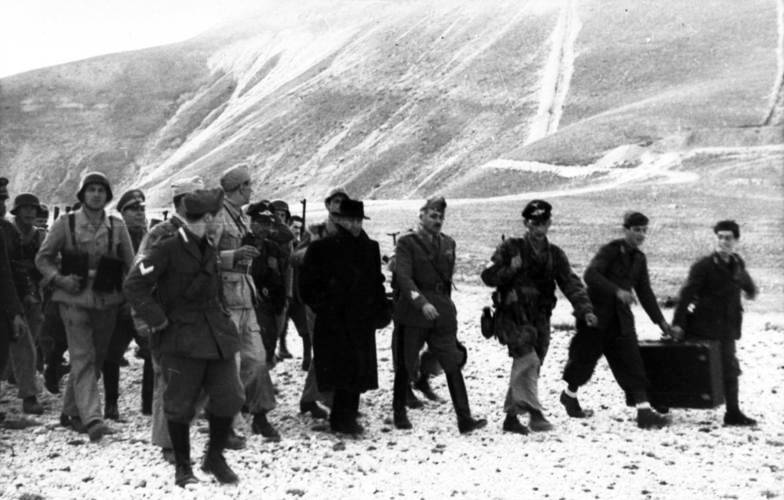
Mussolini with German paratroopers after his liberation, September 12, 1943
On October 13, the Kingdom of Italy, whose formal capital was the city of Brindisi, declared war on Germany and all its allies, including the Italian Social Republic.
A civil war began in Italy. Part of the Italian army fought against the Germans together with Anglo-American troops, other parts and fascists continued to be loyal to Mussolini and began to fight on the side of Germany. The Battle of Italy continued for another year and a half.
England and the USA expected much more from Italy's exit from the war on the side of Germany. It was believed that the Germans would have to fight on two fronts - against the advancing Allies and the former Italian allies in the rear. The Italians will become cannon fodder for the Allies. The Germans would have to quickly abandon most of the peninsula.
Nothing of the sort happened. The large Italian army quickly and quietly disarmed and left the scene. Some Italians surrendered to the Allies, others to the Germans and were sent to the rear as prisoners of war. A small part that remained loyal to the Duce, after the release of Mussolini on September 12, went over to the side of the Germans.
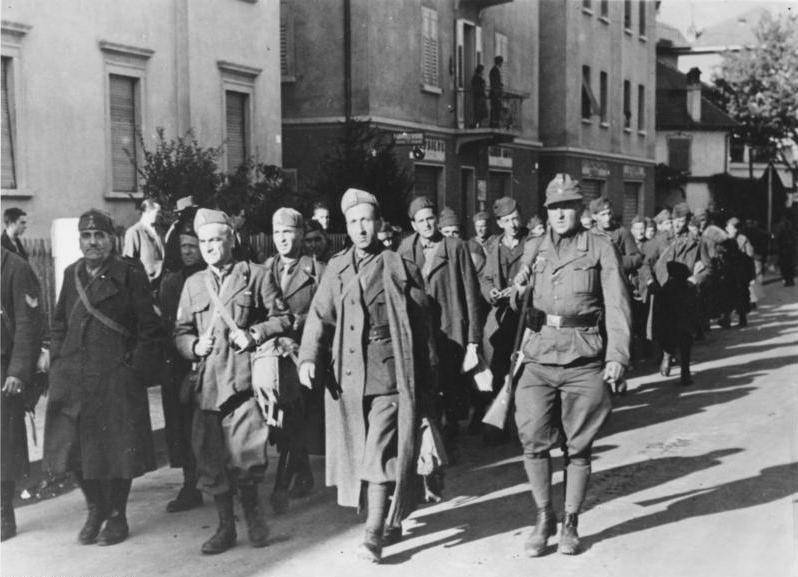
Captured Italian soldiers in Bolzano. Northern Italy
Information